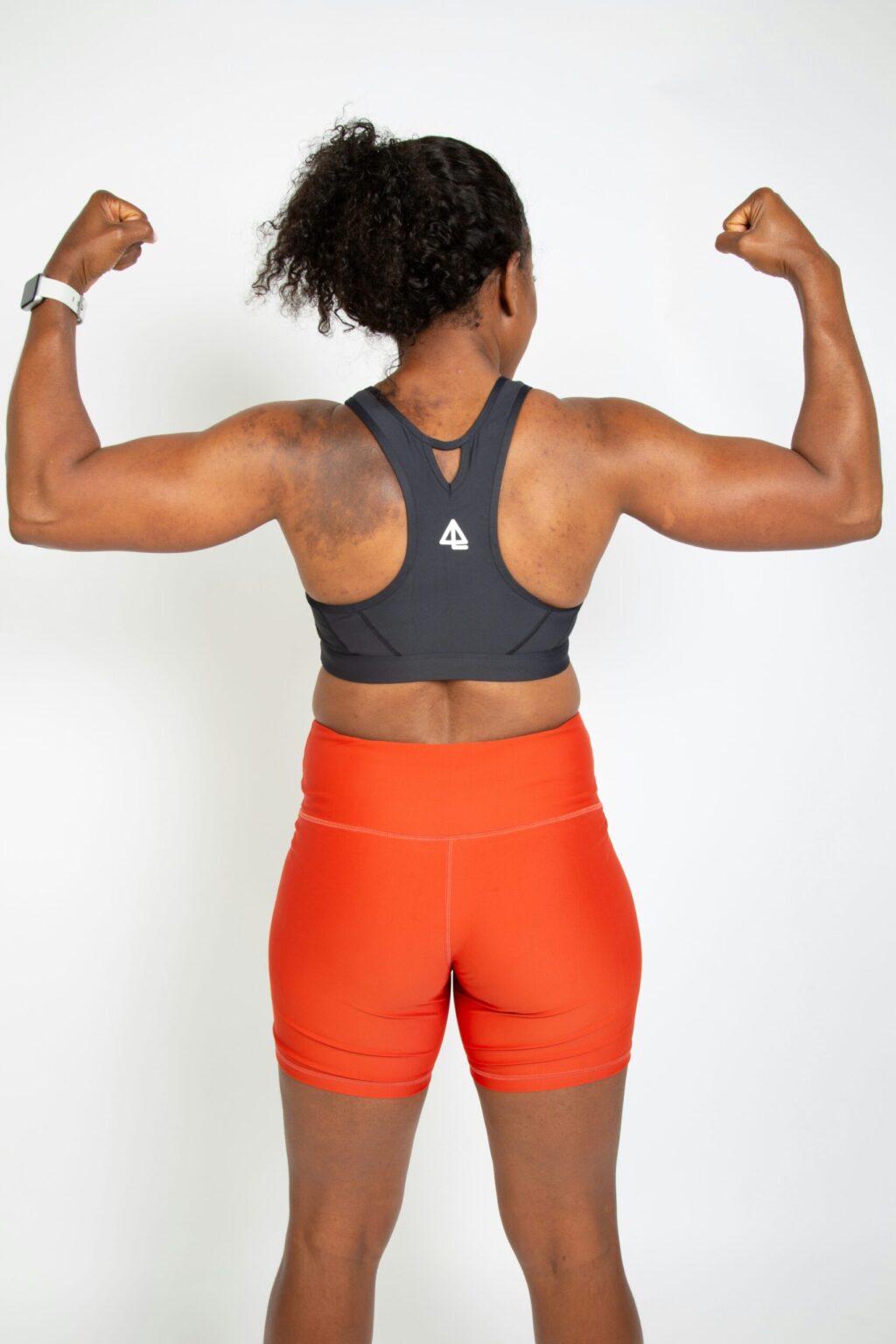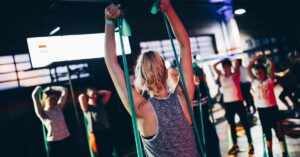Unleashing Your Inner Athlete Through Mindful Movement

Unleashing Your Inner Athlete Through Mindful Movement
In a world that often prioritizes speed and efficiency, the concept of “mindful movement” might seem like a quaint idea, reserved for yoga classes or meditation retreats. But what if I told you that embracing this approach could unlock the athlete within you? Yes, you heard that right. It’s time to shift your mindset from merely going through the motions to fully engaging with your body and its capabilities.
The Intersection of Mind and Body
Let’s take a moment to think about the relationship between the mind and the body. For many of us, the gym is a battleground where we push ourselves to the limit, often at the expense of our mental well-being. It struck me recently during a particularly grueling workout, as I gasped for air and felt my muscles scream in protest, that I was missing an essential element: my mind. Instead of tuning in to what my body was telling me, I was merely focused on the numbers—how many reps, how much weight, how quickly I could finish.
Mindful movement challenges us to blend our physical exertion with mental awareness. Imagine going for a run, not just for the sake of burning calories, but to connect with every step, every breath, and the rhythm of your heartbeat. This isn’t about ditching your fitness goals; it’s about enhancing them. Research suggests that athletes who incorporate mindfulness into their training often experience improved performance, focus, and even resilience. A significant number of elite athletes, from marathon runners to professional football players, have adopted mindfulness practices, swearing by their benefits.
What is Mindful Movement?
So, what exactly is mindful movement? At its core, it involves being present in the moment while engaging in physical activity. This can take many forms—from yoga and tai chi to simply walking while paying attention to your breath and surroundings. The goal is to cultivate awareness of your body and its sensations, which can lead to a deeper understanding of your physical capabilities.
Some key components of mindful movement include:
- Awareness: Noticing your body’s movements and sensations without judgment.
- Breath: Using breath as an anchor to ground yourself in the present moment.
- Focus: Concentrating on the task at hand, whether it’s running, lifting weights, or practicing yoga.
As you start to practice mindful movement, you may find that your workouts become more enjoyable and less of a chore. I remember a time when I was stuck in a monotonous gym routine. It felt like I was just going through the motions. But once I embraced the concept of mindful movement, everything changed. Suddenly, my workouts transformed into a meditative experience rather than just a means to an end.
The Science Behind Mindful Movement
You might be wondering: does mindfulness really work? Well, let’s look at some of the science. Studies have shown that mindfulness can have a positive impact on athletic performance and overall physical health. A study published in the journal “Psychology of Sport and Exercise” found that athletes who practiced mindfulness reported lower levels of anxiety and improved focus during competitions. This is a game-changer, especially for those who struggle with pre-game jitters or performance anxiety.
Moreover, mindfulness has been linked to enhanced recovery. When we engage in mindful movement, we become more attuned to our bodies, allowing us to recognize when we need rest or when we can push ourselves further. It’s about listening to that inner voice—(you know the one that’s often drowned out by our inner critic)—and trusting it. One expert in sports psychology once told me, “Your body knows more than you give it credit for. Sometimes, all you need to do is listen.”
Practical Tips for Incorporating Mindful Movement
Ready to give mindful movement a shot? Here are some practical tips to help you get started:
1. Start Small
If you’re new to the idea of mindful movement, it can be overwhelming to think about incorporating it into every workout. Instead, start small. Choose one aspect of your routine to focus on. Perhaps it’s your breath during a run or the feeling of your muscles contracting during strength training. Gradually expand your mindfulness practice as you become more comfortable.
2. Create a Mindful Environment
Set the stage for mindfulness by creating an environment that encourages focus and relaxation. This could mean finding a quiet spot to practice yoga or listening to calming music while you lift weights. (I can’t stress enough the importance of a good playlist—it can make or break your workout vibe!)
3. Incorporate Breathing Exercises
Before you begin any physical activity, take a moment to center yourself with some deep breathing exercises. Inhale deeply through your nose, hold for a few seconds, and then exhale slowly through your mouth. This simple practice can help clear your mind and prepare you for the movement ahead.
4. Engage All Your Senses
While engaging in your chosen activity, pay attention to all your senses. Notice the sounds around you, the feeling of the ground beneath your feet, or the scent of fresh air. This sensory awareness can deepen your connection to the movement and enhance your overall experience.
5. Reflect Post-Workout
After your workout, take a few moments to reflect on your experience. What did you notice? How did your body feel? Did you encounter any challenges? Journaling can be a valuable tool for this reflection. I often jot down my thoughts post-workout; it helps solidify the lessons learned and encourages growth.
The Role of Mindfulness in Various Sports
Mindful movement isn’t just a one-size-fits-all approach; it can be adapted to various sports and activities. Whether you’re a runner, a cyclist, a swimmer, or a yogi, there’s a mindful practice that can enhance your performance.
Running
For runners, mindful movement can transform the experience from a race against the clock to a journey of self-discovery. Instead of fixating on your pace, try to focus on your breath and the rhythm of your feet hitting the ground. Notice how your body feels as it moves through the air. You might be surprised at how much more enjoyable your runs can become when you shift your focus.
Cycling
Cyclists can benefit from mindful movement by paying attention to the sensations of the bike beneath them and the wind against their skin. I once joined a cycling group where the leader encouraged us to ride in silence for a few minutes, simply soaking in the surroundings. It was an eye-opening experience, as I discovered new aspects of my ride that I had previously overlooked.
Swimming
For swimmers, mindfulness can enhance both technique and enjoyment. Focus on the water flowing past your body, the rhythm of your strokes, and the sensation of your muscles working. This awareness can lead to improved efficiency in the water and a deeper appreciation of each lap.
Yoga
Of course, yoga is perhaps the most recognized form of mindful movement. Each pose offers an opportunity to connect with your breath and body. Instructors often remind us to focus on the present moment, letting go of distractions. I’ve found that some of my most profound insights come during these classes, when I’m fully immersed in the practice.
Mindful Movement and Mental Health
Beyond performance enhancement, mindful movement has significant implications for mental health. In a time when anxiety and stress seem to be at an all-time high, engaging in mindful physical activity can serve as a powerful antidote. Mindfulness practices have been shown to reduce symptoms of anxiety and depression, fostering a sense of calm and well-being.
Consider this: when we engage in mindful movement, we create a sanctuary for our minds. This space allows us to step away from daily stressors and reconnect with ourselves. It’s like a mini-vacation for the mind wrapped in a workout. I often find solace in a brisk walk, where the rhythm of my steps aligns with my thoughts, creating a meditative flow.
Overcoming Challenges in Mindful Movement
Of course, embracing mindful movement isn’t without its challenges. Many of us are conditioned to push through discomfort or to view workouts purely as a means to an end. It’s easy to fall back into old habits, especially when we’re pressed for time or feeling particularly motivated by external goals.
Here are some common hurdles and how to overcome them:
1. Distractions
In our fast-paced world, distractions are everywhere. Whether it’s your phone buzzing or the chatter of others at the gym, it can be tough to focus on the present moment. One strategy is to set boundaries by choosing specific times for your mindful practice—perhaps early in the morning when the world is still quiet.
2. Self-Judgment
Many of us are our own worst critics. When engaging in mindful movement, it’s crucial to let go of judgment. Remember, it’s not about perfection; it’s about connection. Try to approach your practice with curiosity and compassion, allowing yourself to experience whatever arises.
3. Lack of Time
In a busy life, finding time for mindful movement can feel like an uphill battle. The good news is that you don’t need hours to reap the benefits. Even a few minutes of focused movement can make a difference. Consider integrating mindfulness into everyday activities—take a moment to breathe deeply while waiting for your coffee or practice a few stretches during a break.
Mindful Movement in a Group Setting
While many people find solace in solitary practices, group settings can also enhance mindful movement experiences. There’s something unique about sharing space with others who are also seeking to connect with their bodies and minds. Classes—whether yoga, dance, or martial arts—often foster a sense of community and support.
I recall attending a mindful movement workshop where we practiced partner exercises. Not only did it deepen my understanding of movement, but it also fostered connections with fellow participants. Engaging with others in this way can bring an added layer of motivation and accountability.
Final Thoughts: Embracing Your Inner Athlete
As we conclude this exploration of mindful movement, it’s essential to remember that unleashing your inner athlete isn’t solely about physical prowess. It’s about embracing the journey—body, mind, and spirit. It’s about finding joy in movement, cultivating awareness, and ultimately, building a deeper connection with yourself.
So, whether you’re a seasoned athlete or a casual fitness enthusiast, consider incorporating mindful movement into your routine. Take the time to listen to your body, engage with your breath, and relish the experience of movement. You may find that the athlete within you is more alive than ever.
And who knows? You might even surprise yourself with what you’re capable of when you approach your workouts with intention and awareness. After all, as they say, “It’s not about the destination; it’s about the journey.” (Though, let’s be honest—sometimes the destination, especially if it’s a post-workout smoothie, is pretty sweet too.)







